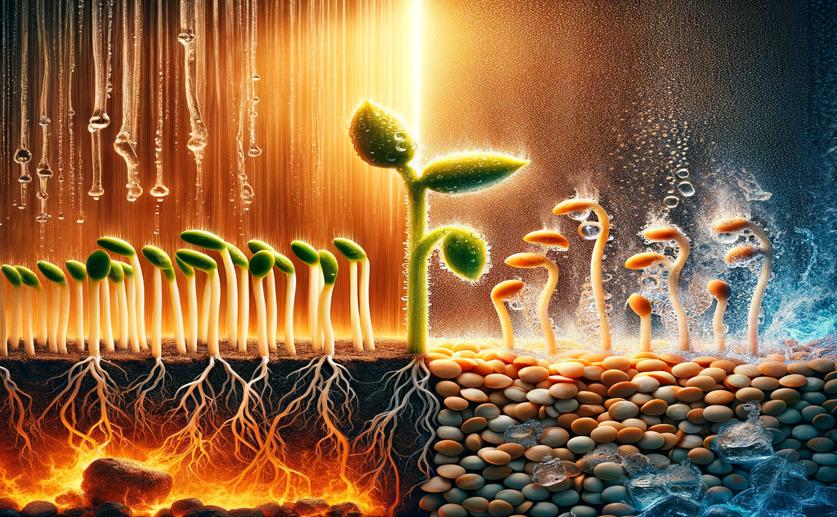
How Lentil Seeds Grow Under Different Water Conditions and Temperatures
Jim Crocker
6th June, 2024

Image Source: Natural Science News, 2024
Key Findings
- The study was conducted at the University of Peshawar to understand lentil seed germination under different temperatures and water potentials
- Lentil seed germination rates were highest at moderate temperatures (20°C to 30°C) and optimal water potentials (0 to -0.3 MPa)
- Germination rates significantly declined at temperatures above 30°C or water potentials below -0.3 MPa
AgricultureBiochemPlant Science
References
Main Study
1) Germination responses of Lens Culiunaris L. seeds to osmotic potentials at cardinal temperatures using hydrothermal time model
Published 5th June, 2024
https://doi.org/10.1186/s12870-024-05223-0
Related Studies
2) Validating the Impact of Water Potential and Temperature on Seed Germination of Wheat (Triticum aestivum L.) via Hydrothermal Time Model.
3) Seed priming with chitosan improves maize germination and seedling growth in relation to physiological changes under low temperature stress.
4) Lentil and Kale: Complementary Nutrient-Rich Whole Food Sources to Combat Micronutrient and Calorie Malnutrition.



 31st May, 2024 | Jim Crocker
31st May, 2024 | Jim Crocker